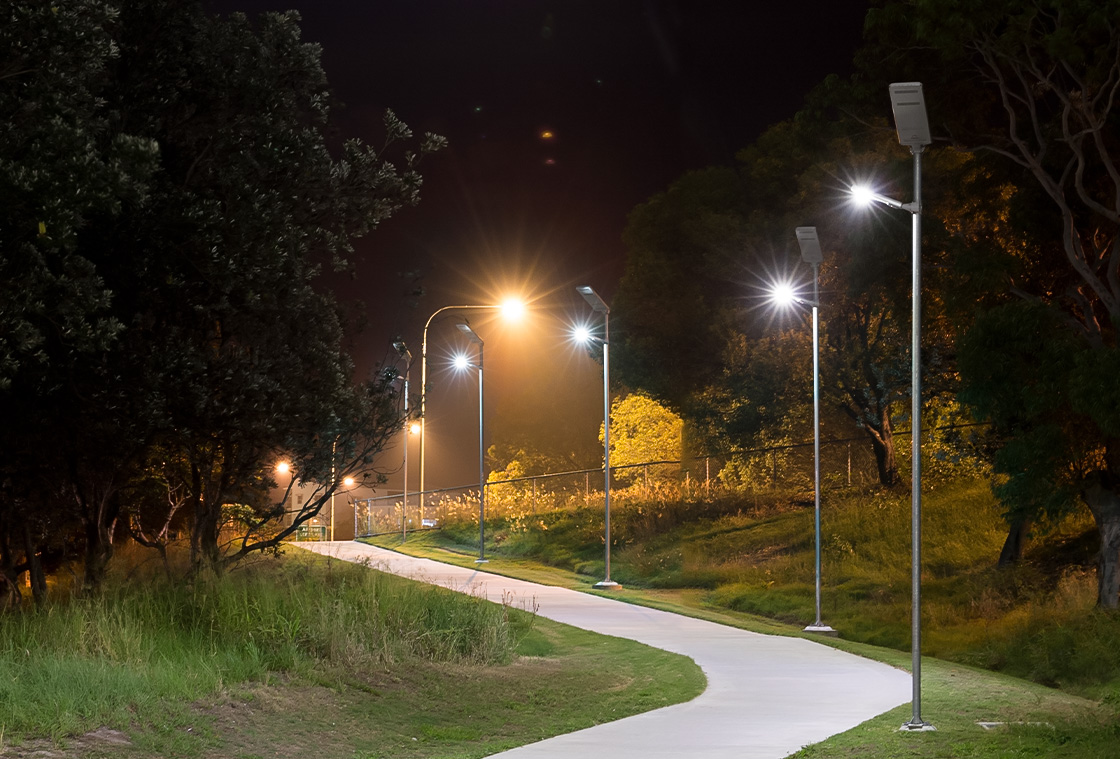7 Questions You Need to Ask Before You Start a Commercial Public Lighting Project
To install traditional commercial lights for a community, you don’t need to focus on the brightness or continuous operation because there is an expectation that it will work as specified. You trench, lay cables, connect to the utility, and then you have light.
However, many community companies are looking for economical public lighting systems to avoid the costs on trenching, laying cables and expensive on-going power. So properly modern commercial solar lighting systems are fantastic options, while they can achieve the same lighting result as traditions lights. And there are a few specific things you need to evaluate to ensure you get the right lighitng results.
Before starting a public lighting project, there are seven questions you need to ask and get the answers.
Q1. What is the exact location of the project?
Try to get exact loation of the public lighting project including an accurate street address and site description if possible. This allows the suppliers to calculate solar insolation data into their system design.
As we all know, different areas and different time receive different amounts of sunlight each day. For instance, a solar light specified for sunny, southern Los Angeles would be smaller and therefore wouldn’t be able to generate enough power to provide continuous light for Anchorage, Alaska. And a solar light specified for Anchorage would be unnecessarily large for Los Angeles.
Knowing the project location allows the suppliers to offer their systems to meet your exact location situation and to avoid proposing systems that are too small or too large for your area. Besides, a street address can help suppliers to assess the potential shading hazards- like trees, buildings, or other obstructions- which could block the solar panels from the sun and decrease your systems’ performance.
Q2. What kind of area are you trying to illuminate?
It is necessary to know the lighting applications because the supplier can give a proper suggestion for the lighting output requirement, pole height, and pole spacing etc. A street, for instance, will probably require higher light levels than a park or pathway.
So you need to confirm the lighting applications to suppliers such as car park, recreational reserve, thoroughfares or residential street.
Q3. What is the length of the street/pathway or size of the general area?
The length of the street/pathway or size of the general area will affect the number of lighting systems required, and the uniformity of the light hitting the ground, which all factors into the overall project cost.
Q4. What are the height and type of the pole?
Pole height may affect the lighting distance and number of the lighting systems required for the project. Pole type may affect the installation costs and time.
Q5. What are requirements of light levels and uniformity?
Because different applications will require different light levels, which plays a large role in determining the overall project cost, you need to know the standard for the light levels for the project and what are they. Besides, the kind of light levels and uniformity requirements are necessarily be known.
Q6. What is the operating profile of the lighting system?
Operating profile is a key aspect of the solar lighting project. Suppliers will provide the most suitable lighting systems according to these profiles.
Here are some examples of operating profiles:
- Dusk to dawn (all-night operation): the light will run at the same light output level all night long.
- Dim in off-peak hours: for instance, the light will run at the required light output level for 5 hours after dusk, then dim to 30% of the required light level. 2 hours before dawn, the light levels will return to 100% until sunrise.
- Off or dimmed at an exact time: for instance, the light will run at the required light output level until 11 p.m., then will turn off.
Q7. What is the color temperature of the lighting system?
Color temperature affects the fixture power output and even the project cost. While the light color temperature may be more of a preference than a requirement, considering people’s health and the environment, most cities are leaning more towards lights with warmer color temperatures.
In Summary
These qustions can help you get right solar lighting systems that will meet your project requirements over the long term at no extra cost.
Contact us to learn more about commercial public lighting systems and how they can affect the overall performance and cost.

